Using Weighted Sleds for Acceleration Work
Using Weighted Sleds With Young Athletes
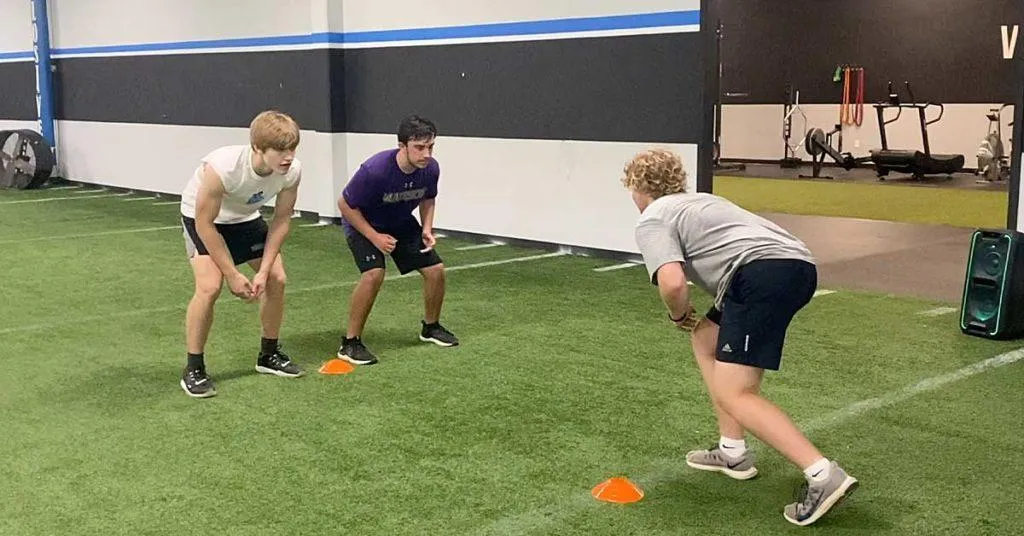
By Jim Kielbaso
There are plenty of toys out there designed for speed development, but one of the most effective and easiest to use is a weighted sled. The research on resisted sprinting using these sleds is way behind the actual use of the device, but that’s usually how it goes. More recent information has shown that proper use of these sleds can have a positive effect on a young athletes ability to accelerate – one of the most important aspects of speed in many sports.
Most of the early research on resisted sprinting was focused on kinematics. They wanted to see if using a sled would change sprinting mechanics significantly enough to cause problems. Through experimentation of different loads, it turns out that using a relatively low weight (8-20% of bodyweight) will not have a significantly negative impact on mechanics.
The old research also focused on maximal velocity running instead of acceleration. The conclusions drawn from this research showed that resisted sprinting at maximal velocity (top speed) did not have a positive training effect and could actually have a slightly detrimental effect. Most of this was seen because the resistance caused longer ground contact times at top speed. The studies showed that maximal velocity training with no resistance may be better than using resistance.
A more recent study by Harrison and Bourke out of Limerick, Ireland showed that training with the weighted sled significantly improved scores on the time to 5 meters test. The study had subjects perform two resisted sprinting sessions per week for six weeks, using 13% of their bodyweight as the load. This load was based on an earlier study by Lockie et al that recommended using 12.6-13% of bodyweight. All subjects had experience with resisted sprinting and all were competitive rugby players. They weren’t using untrained individuals, making this much more useful information for sports performance coaches.
After warming up, subjects performed six 20-meter sprints with 4 minutes of rest between bouts. They did this twice a week for 6 weeks and had significantly positive results on their ability to accelerate.
This study, along with the experience of many coaches, provides evidence that use of a weighted sled may be beneficial for improving an athlete’s ability to accelerate. Of course, one of the keys to this kind of training is adequate coaching in the mechanics involved in accelerating. When training
young athletes
we often see them trying to accelerate without a proper forward lean or taking small, lower-power steps. The sled can be a helpful tool in the learning/coaching process because it can help an athlete get into a steeper forward lean without falling. It can also help an athlete alter his/her turnover slightly in favor of producing as much power as possible on the first 2-8 steps of a sprint.
An extremely important aspect of acceleration training with young athletes is the use of proper mechanics. Without quality instruction and the plenty of reps with optimal mechanics, the use of weighted sleds or any other type of acceleration training will be marginalized. A qualified youth coach who can analyze the
young athletes
movements and utilize individualized cues and feedback to improve mechanics is absolutely essential to this process. Lower-quality instruction will yield lower-quality results no matter what kind of apparatus, toy or method is used.
Knee drive is another important aspect of acceleration, and information from another study by Alcaraz et al suggests that a weighted sled may help athletes exaggerate knee drive. This could be a result of having to pull extra weight or the additional forward lean they observed. Either way, it’s a good thing and can benefit athletes who want to increase their acceleration performance.
Based on the scientific evidence and years of coaching experience, use of a weighted sled for improving acceleration performance is recommended as long as adequate coaching is available so mechanics are optimized during the process. I recommend focusing your efforts on the first 5-10 yards of a sprint since this is where the most benefit is seen.
We’re still kind of guessing in regards to the optimal load used, but you certainly want to keep it fairly low for most people. The research does not take into account the abilities of each of the
young athletes
, so a more powerful athlete may be able to use higher loads than 13% of bodyweight and still reap the benefits. Since the research suggests that resisted sprinting somehow strengthens the musculature at high velocities, using the heaviest weight possible without a negative effect on mechanics or joint rotational velocities seems to be the goal.
I also highly encourage the use of contrast training when using a sled. First, do a few reps without a sled, then perform 5-10 reps with the sled. Be sure to always perform 2-4 more reps without the sled to give the athlete the opportunity to “feel” the difference and allow the nervous system to adapt. This could simply be a trick, but it has been suggested that this kind of contrast training can actually get the nervous system to “up-regulate” with consistent training over time. When using resistance, the body is forced to fire harder on each step. Over time, using contrast training, the athlete’s nervous system may learn to fire harder all the time, not just directly after use of the weighted sled. This is still a theory, but the recent research suggests it may be exactly what is occurring.
Other professionals, including well-respected trainer Mike Boyle, use weighted sleds with much higher loads as more of a movement-specific strength training exercise. You can load the sled up and have athletes “march” forward, driving the knees upward, pushing backward as hard as possible and getting into a steep forward-lean position. There is no real scientific evidence that this works, but the principle of specificity would suggest that this could be a good way to add strength when the goal is to improve acceleration speed.
There seems to be enough evidence that a weighted sled works to warrant its use when training for improvements in acceleration speed.
Because there is limited research available, we’re still searching for the optimal training volume and loads for young athletes, but some guidelines are being created through the literature and experience.
·2-3 days/week
·8-20% bodyweight as the load
·4-10 short-distance sprints (5-20 yards) per workout
·Relatively long rest periods between bouts (1 – 4 minutes)
·Utilize contrast training
·Possibly use the sled as a strength training exercise
Try using a weighted sled with your young athletes, and be sure to focus on mechanics.
While it is just one tool in a trainer’s toolbox, it does seem to have merit. As long as the athlete is giving high effort, using appropriate loads and practicing proper mechanics, you should enjoy the results of faster acceleration after a period of training.

Jim Kielbaso
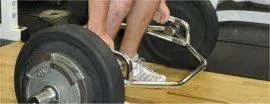
High School Strength Coach Certification
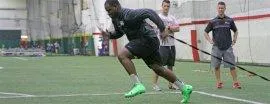
Certified Speed & Agility Specialist
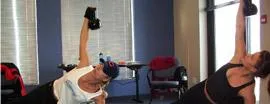
Kettlebell Instructor Course
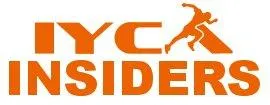
IYCA Insiders - Exclusive Access

Youth Fitness Specialist Certification
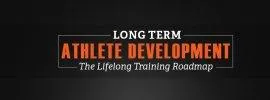
Long Term Athlete Development

Youth Nutrition Specialist Certification

Copyright © 2008 - 2025 International Youth Coaching Association. All Rights Reserved
|
|

